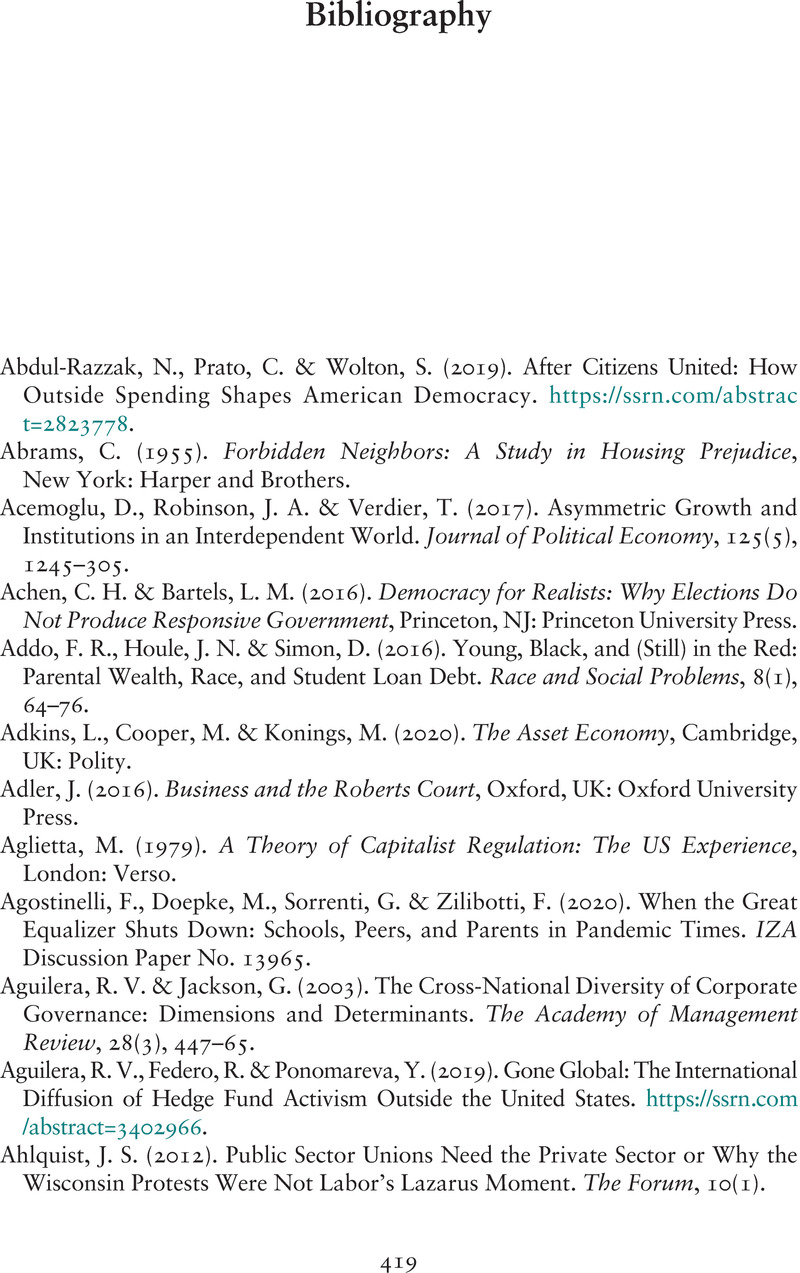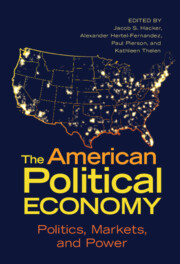Book contents
- The American Political Economy
- The American Political Economy
- Copyright page
- Contents
- Figures
- Tables
- Contributors
- Acknowledgments
- Introduction The American Political Economy: A Framework and Agenda for Research
- I Political Arenas and Actors
- II Race, Space, and Governance
- III Corporate Power and Concentration
- IV The American Knowledge Economy
- Bibliography
- References
Bibliography
Published online by Cambridge University Press: 29 October 2021
- The American Political Economy
- The American Political Economy
- Copyright page
- Contents
- Figures
- Tables
- Contributors
- Acknowledgments
- Introduction The American Political Economy: A Framework and Agenda for Research
- I Political Arenas and Actors
- II Race, Space, and Governance
- III Corporate Power and Concentration
- IV The American Knowledge Economy
- Bibliography
- References
Summary

- Type
- Chapter
- Information
- The American Political EconomyPolitics, Markets, and Power, pp. 419 - 472Publisher: Cambridge University PressPrint publication year: 2021



